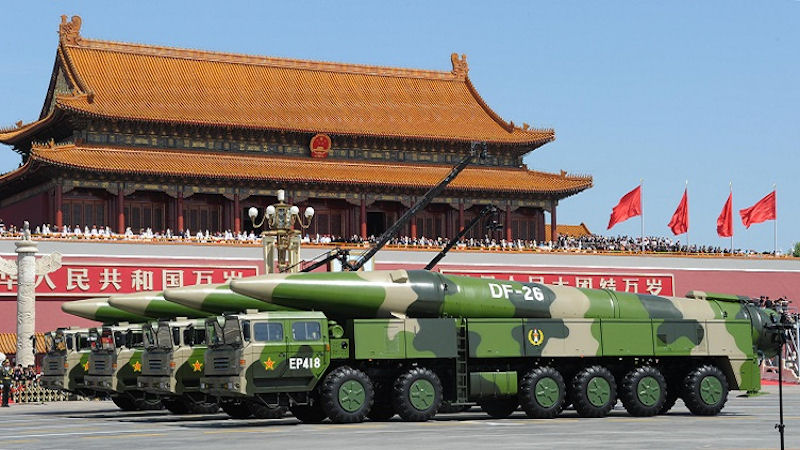
China, Russia, North Korea and Iran’s continued investment in modernizing cruise, ballistic and hypersonic missiles has left the United States “not in a very good position,” the vice chairman of the Joint Chiefs said Tuesday.
Air Force Gen. John Hyten, speaking in a Center for Strategic and International Studies online forum, said “we need [to] have a strategic deterrence review” that examines “our strategic capabilities as an integrated whole” to address the threats posed by these four nations.
The deterrence review, in his estimation, would encompass sensors, command and control and other areas usually not considered in the existing required “stovepiped” Pentagon studies.
For example, “we don’t have an integrated sensor architecture” for hypersonic missile defense, but “the common thread for all missile defense systems is, can I see the threat, can I see the threat coming at me,” he said. Hyten added that “the big piece is not shooters but sensors. [However,] we just love to talk about the interceptors.”
As it stands now, the Pentagon is producing separate reviews on nuclear posture, space and missiles – and they often do not align easily. “We have to figure out what our priorities are,” he said.
During the forum, Hyten often returned to the need for integrated sensors in all domains, command and control and the development of “appropriate defeat technology,” including the Next Generation Interceptor.
Hyten said work on the Next Generation Interceptor is necessary to defend the United States homeland from ballistic missile attacks from North Korea. Teams from Lockheed Martin, Northrop Grumman and Boeing are working on design and development proposals for the $1.2 billion program.
In an answer to an audience question, he pointed to the new submarine-launched missiles Pyongyang paraded in mid-January as proof that “North Korea is continuing to move forward in their capabilities.”
“The goal is to stay ahead of your adversary,” but cost is a factor in the decision of where to invest, he said.

Hyten said the North Korea ballistic missile threat remains real. Citing the escalating tensions between Pyongyang and Washington in 2017, he added “there’s a chance they would fire at us and we want [to be able] to shoot it down” before the missile strikes the United States. Additional Ground Base Interceptors were deployed in California and Alaska to signal American resolve.
On the Next Generation Interceptor, he said the Pentagon will continue to look at these requirements before awarding a contract. Fielding is projected to occur in 2028.
Unlike many fellow officers in the Air Force, Hyten wants each service “to be able to defend itself and strike deep” – at least for now. In the Pacific, U.S are under the threat of intermediate-range Chinese ballistic, cruise or hypersonic missiles.
“We need to step our game up” to meet the challenges China poses in the Indo-Pacific with its array of intermediate-range missiles, he said.
Hyten said “maneuver is now ubiquitous in everything we do – land, maritime, air, space and cyber.”
Arguing now over roles and missions without ever having tested what exists for maneuvering in all domains “is a waste of oxygen.” He said “we’ve got to look at the world of 2021,” not roles and missions as defined in the late 1940s when the Defense Department and the Air Force were established.
Of immediate concern to Hyten has been the impact of COVID-19 on the second and lower tiers of the defense industrial base. “The supply chain at that level is weak,” he said. In his position as vice chairman, Hyten said he has seen the same weakness in providing necessary medical equipment and gear to health care workers in the United States and that the pandemic also exposed vulnerabilities in the supply chain’s ability to deliver ingredients necessary to produce a variety of vaccines.





